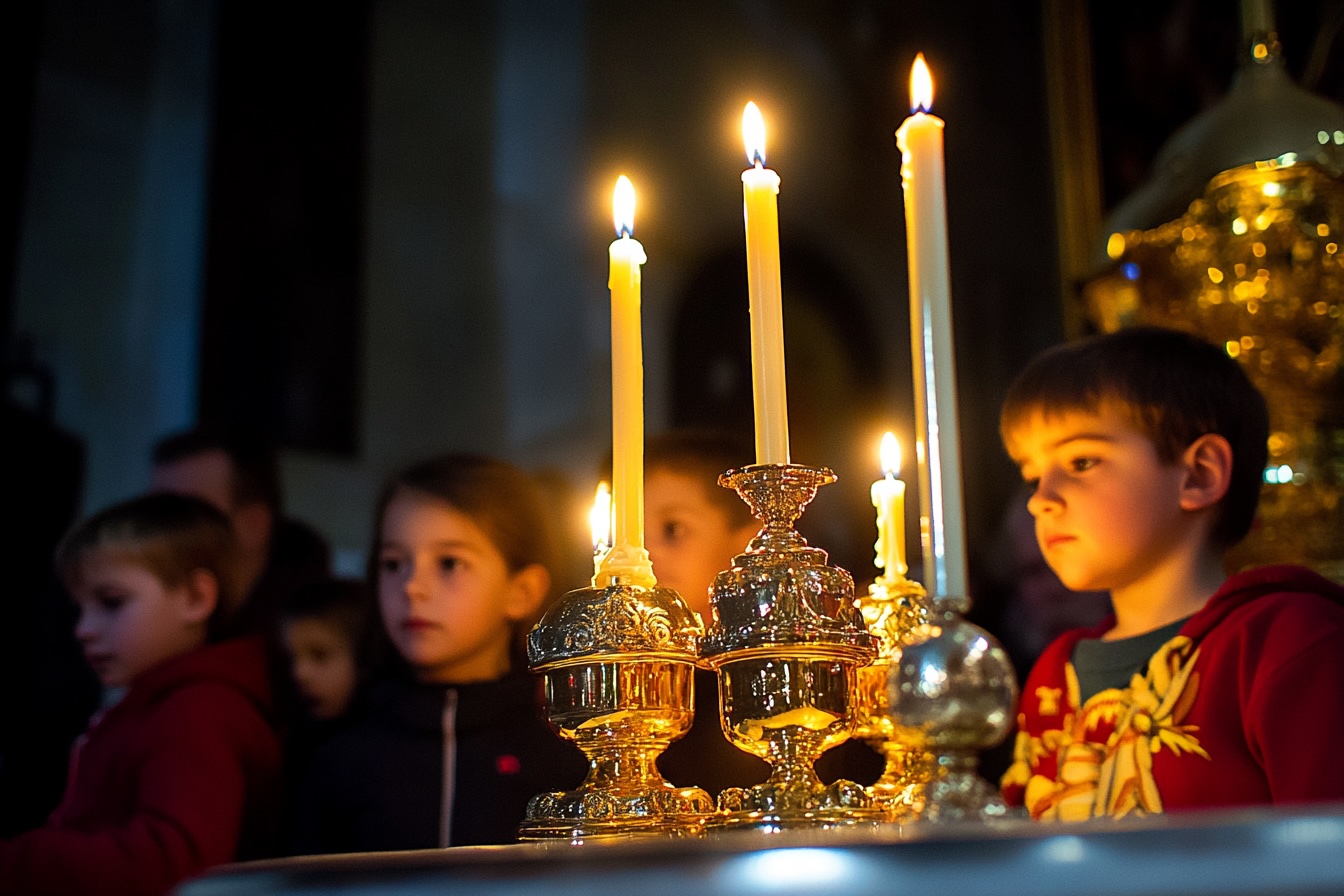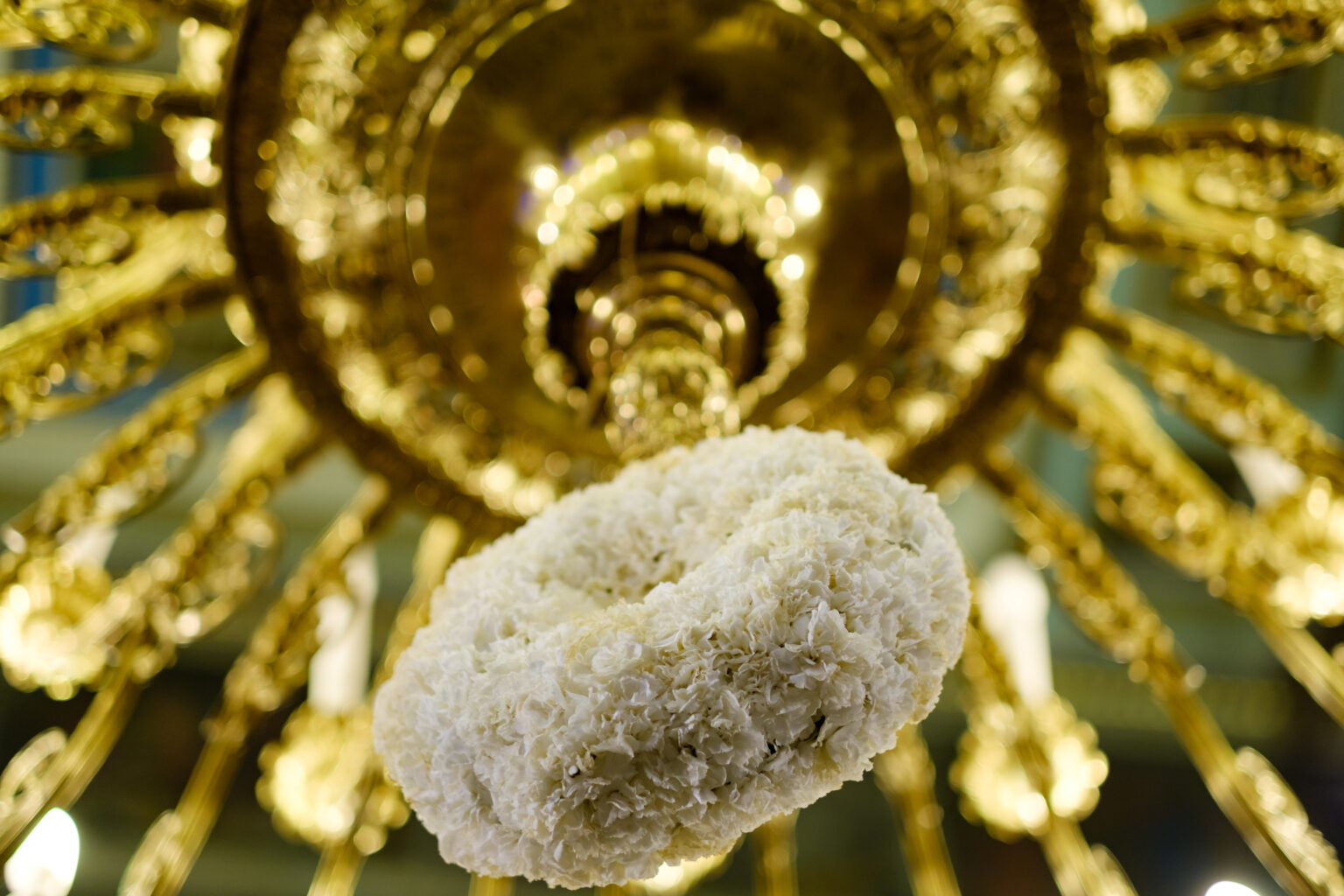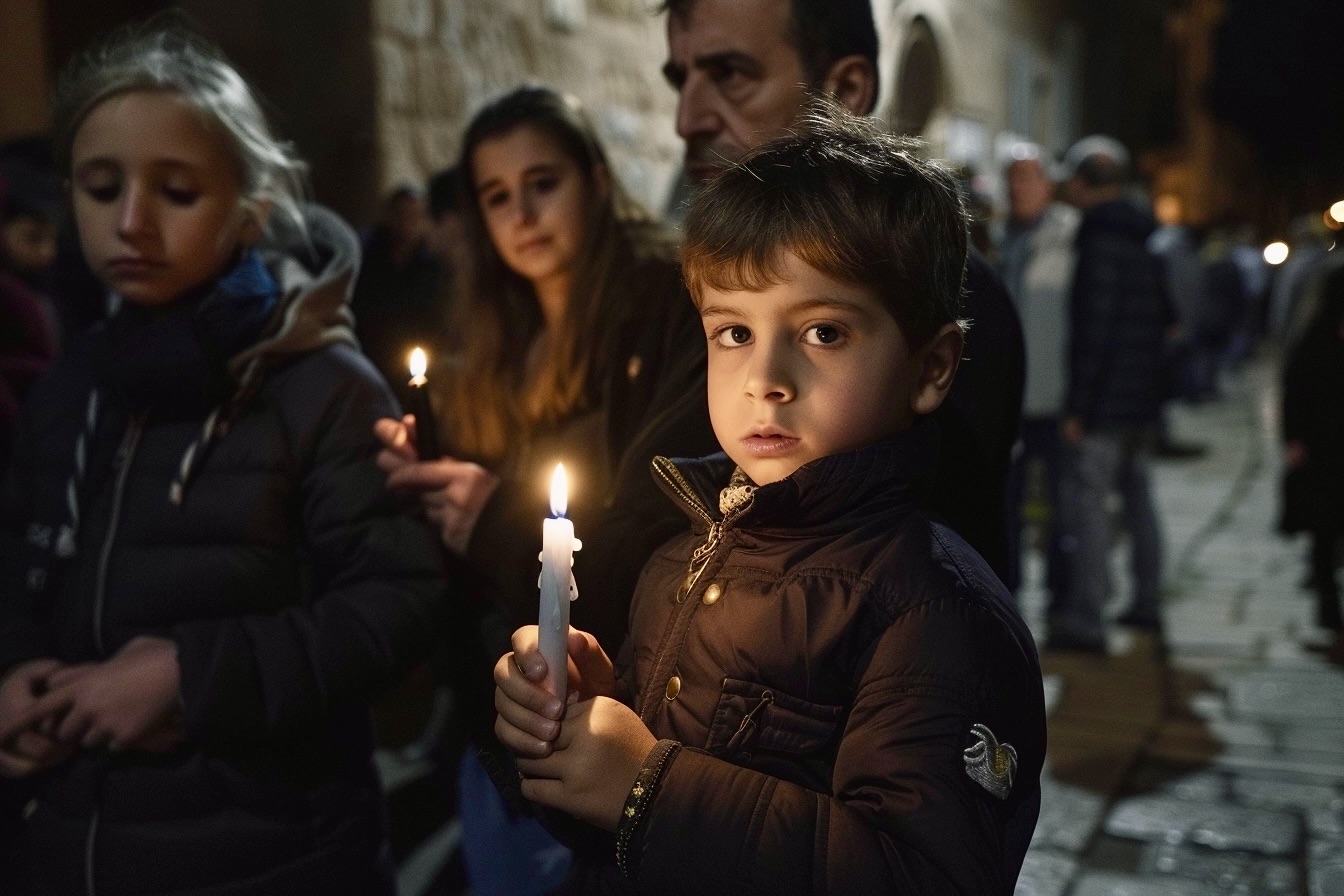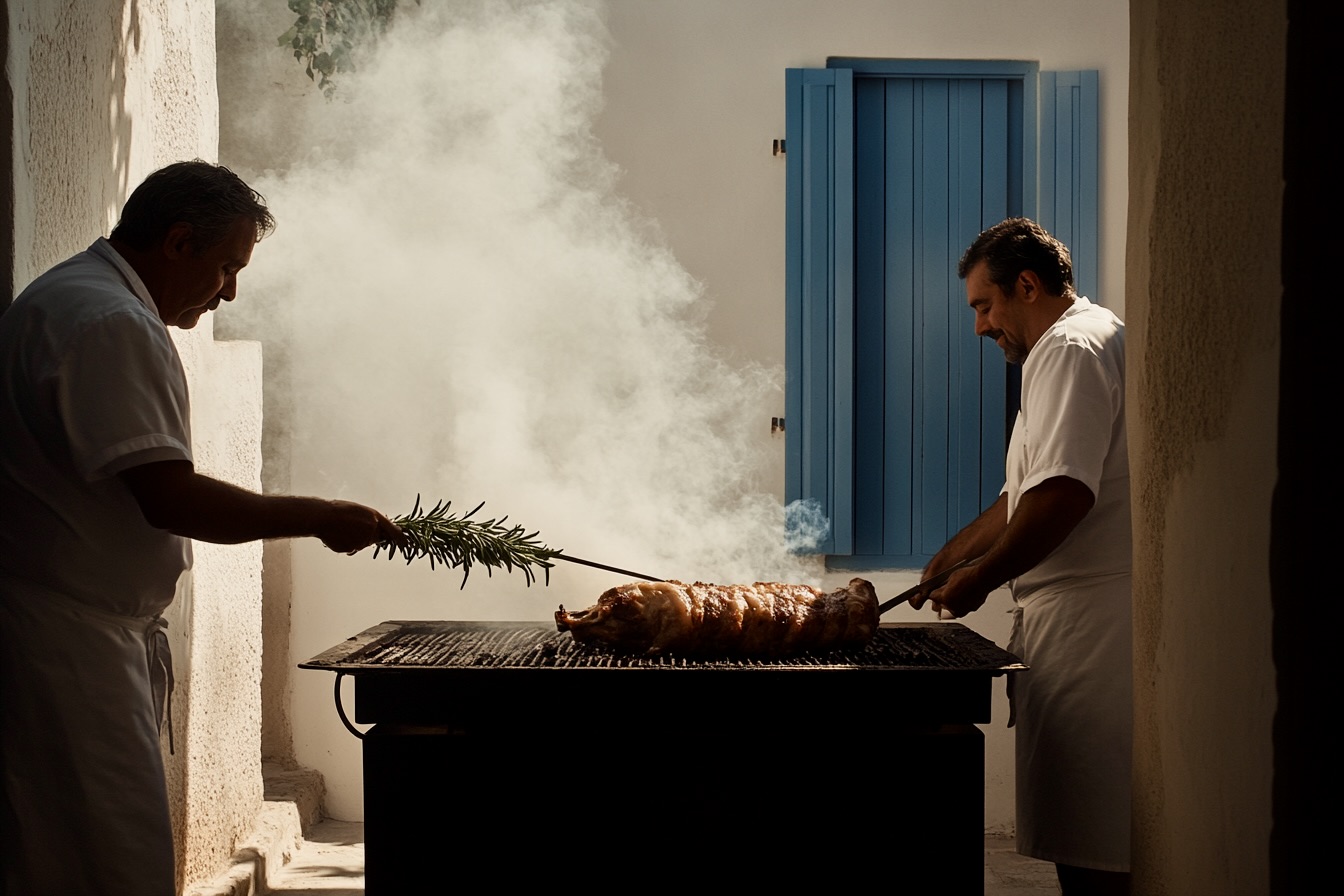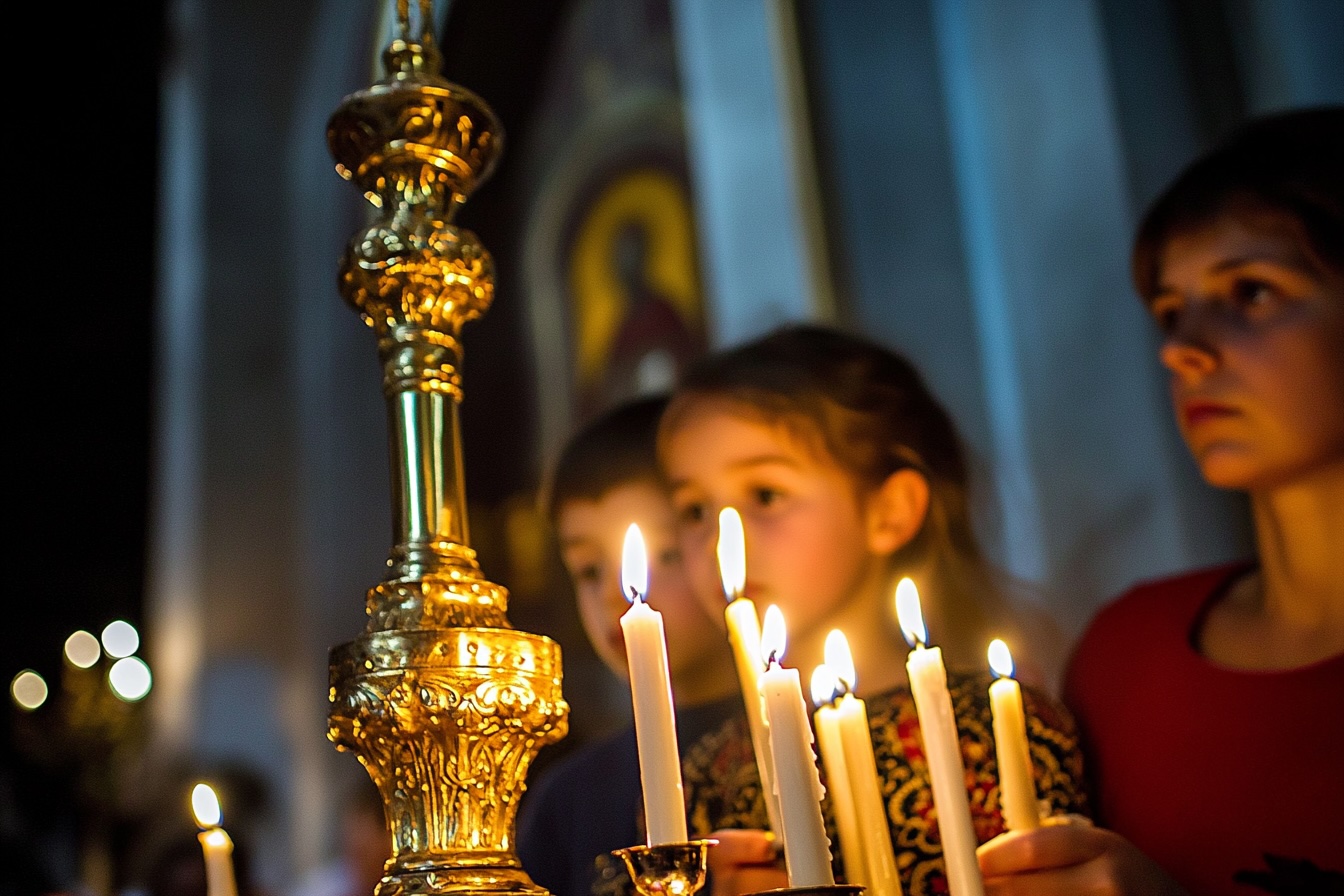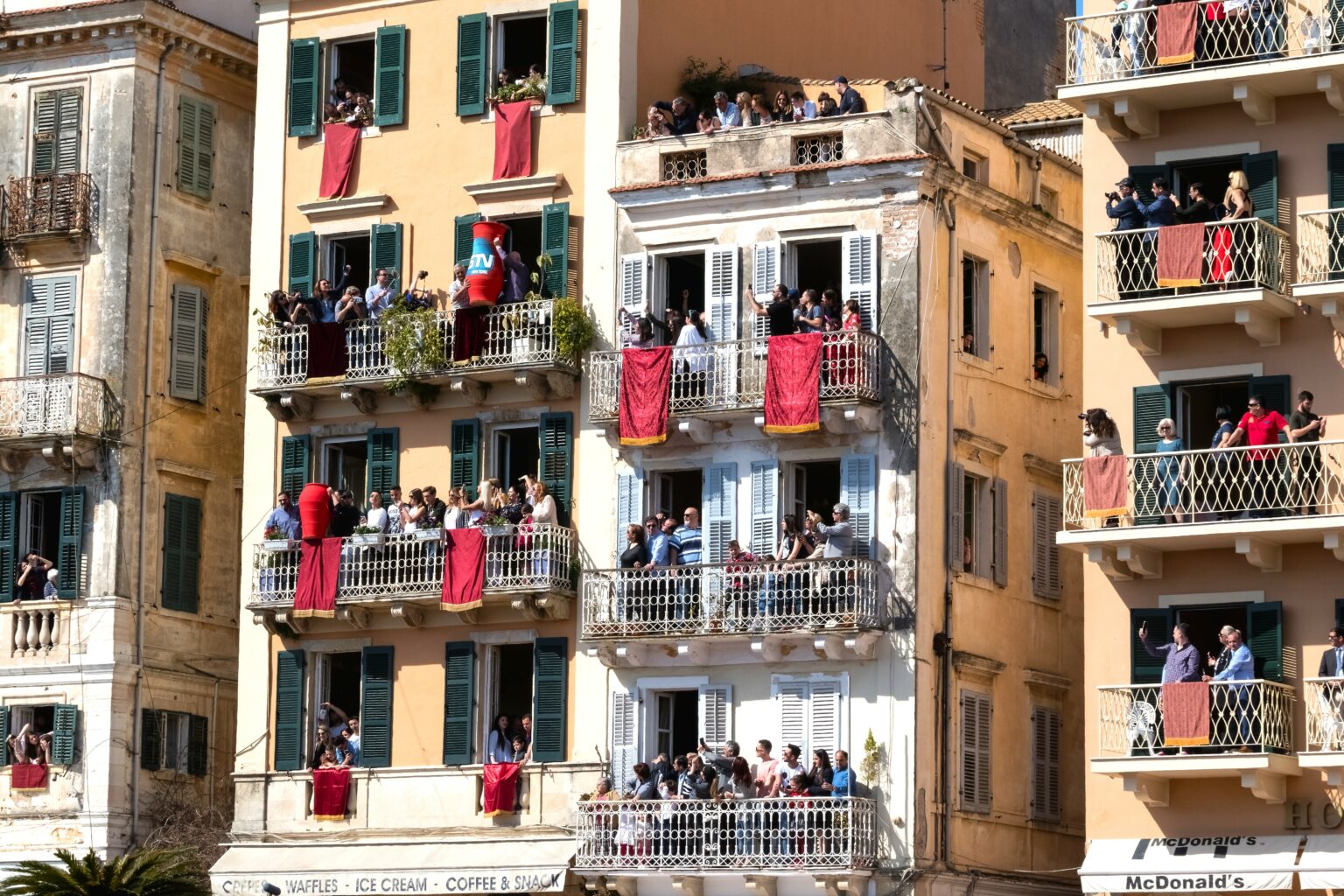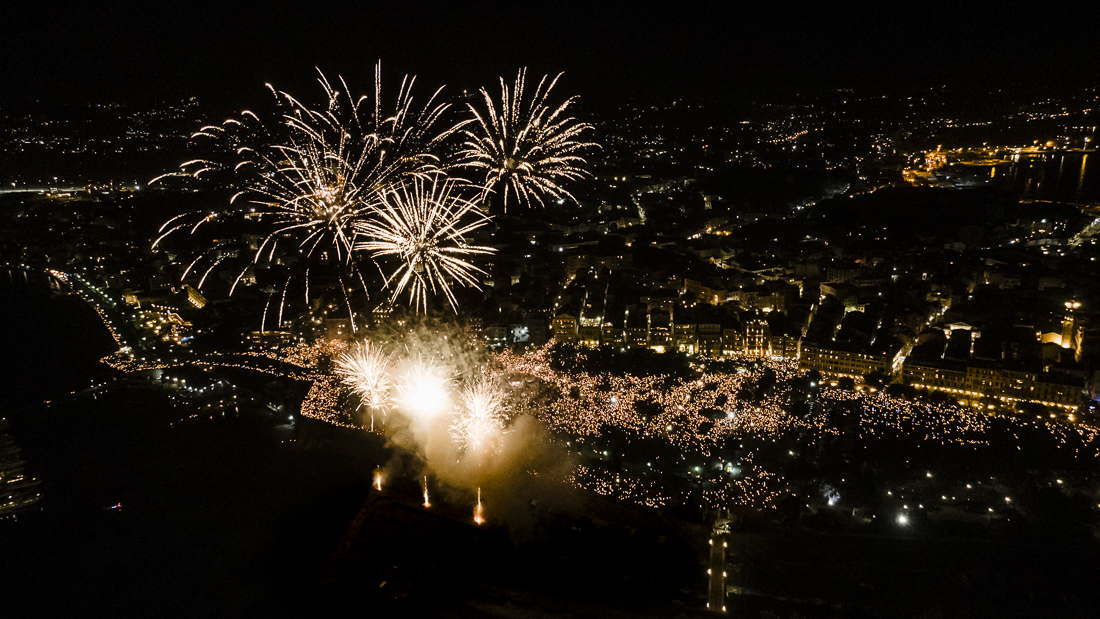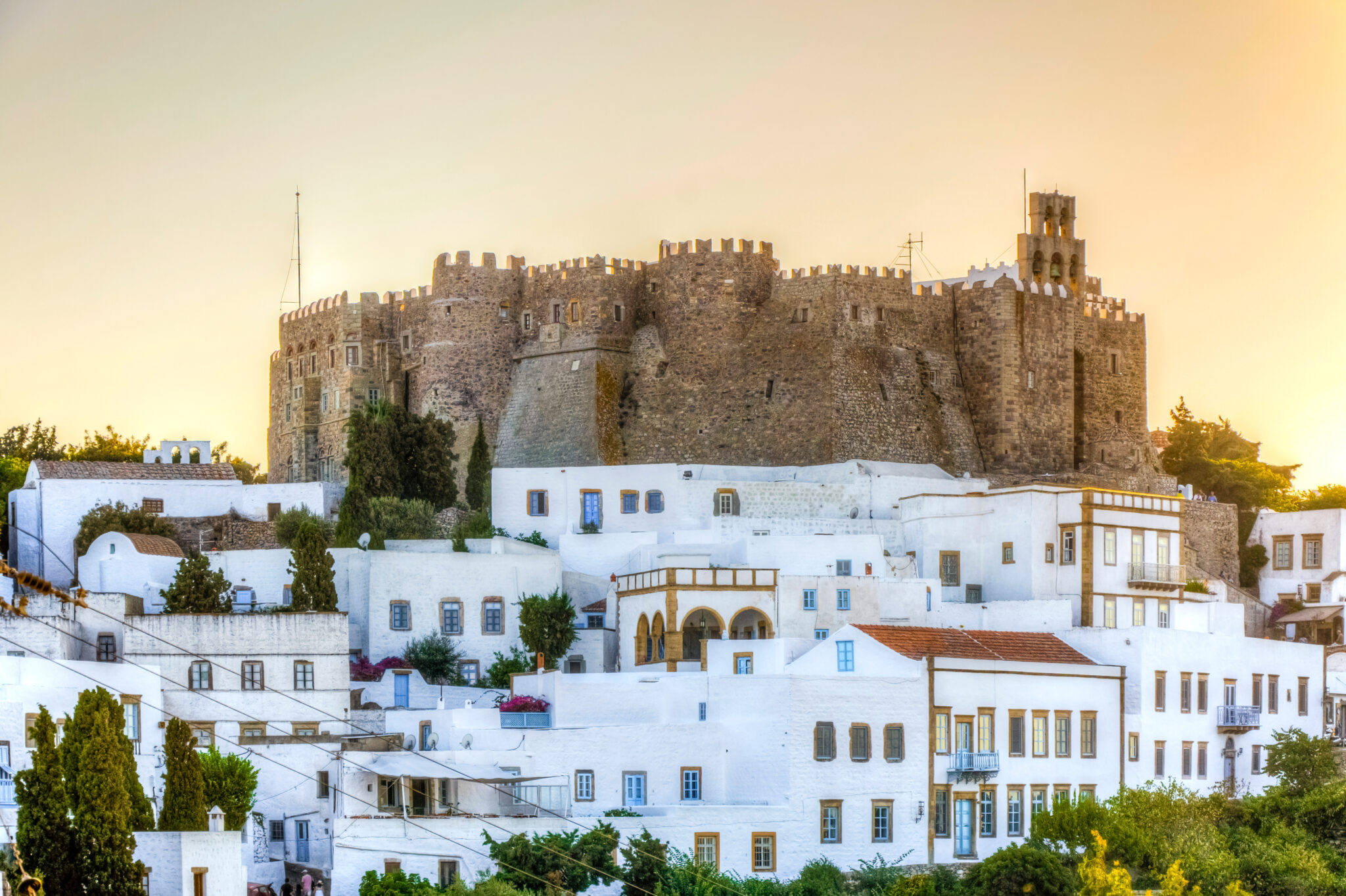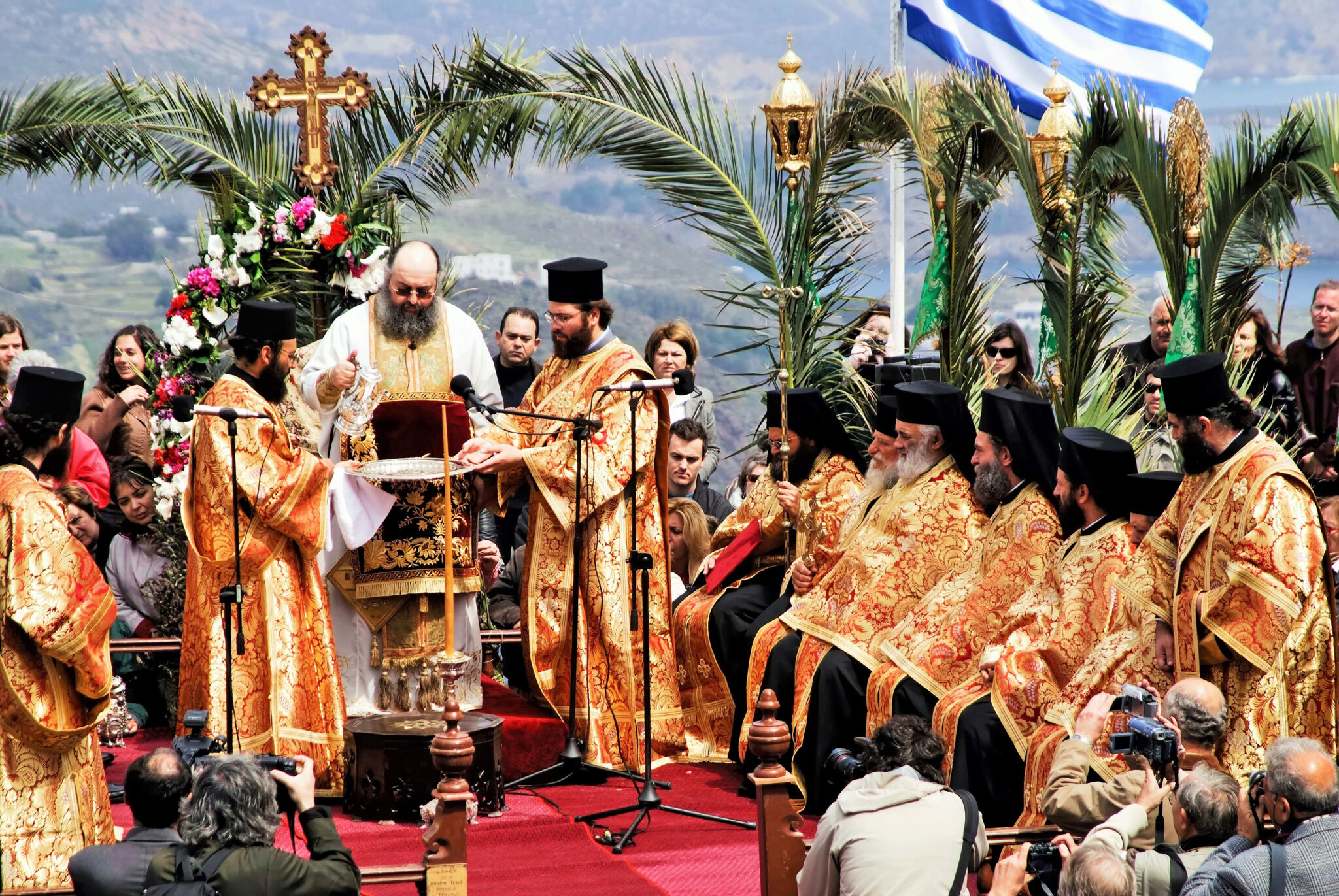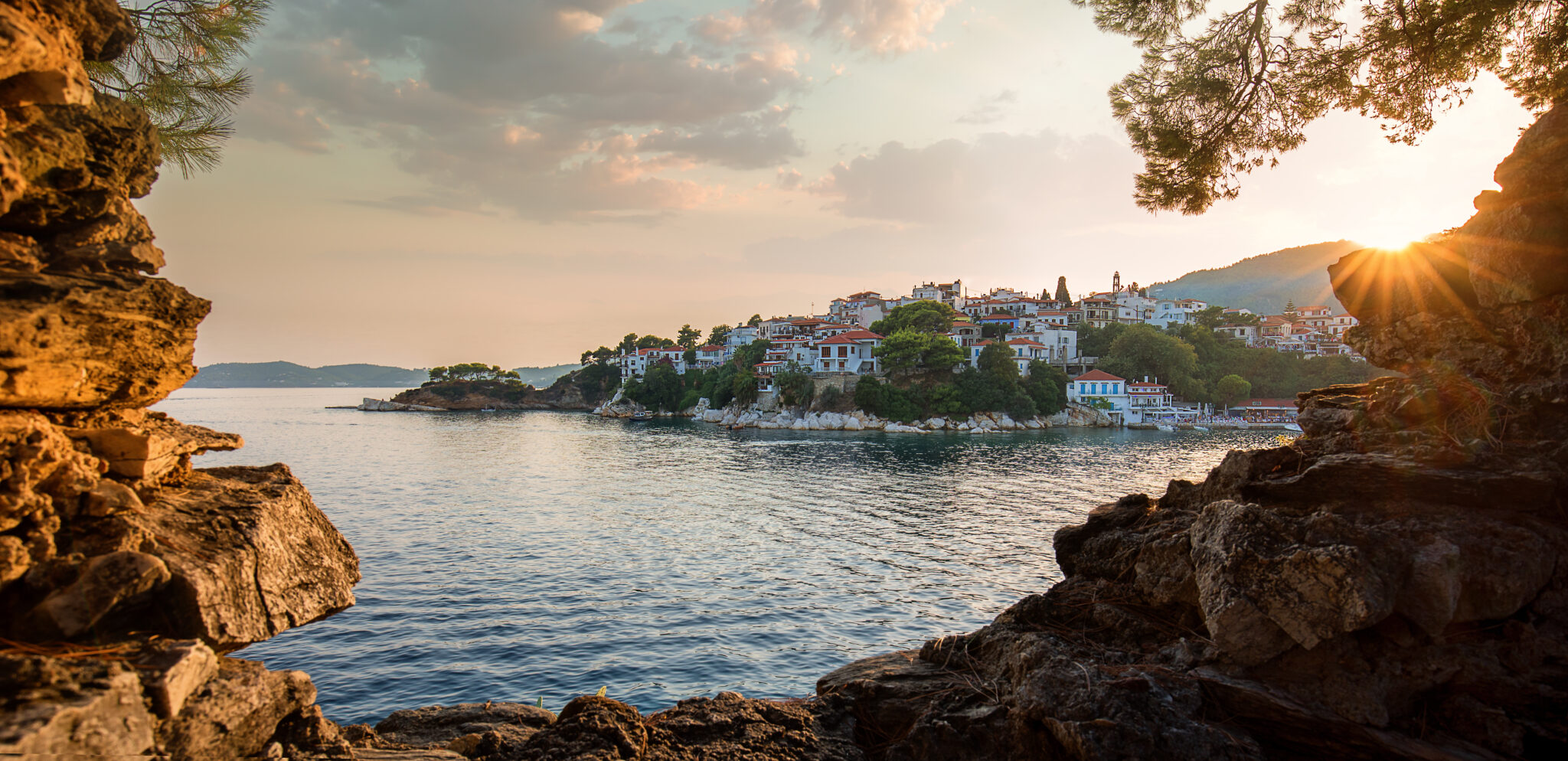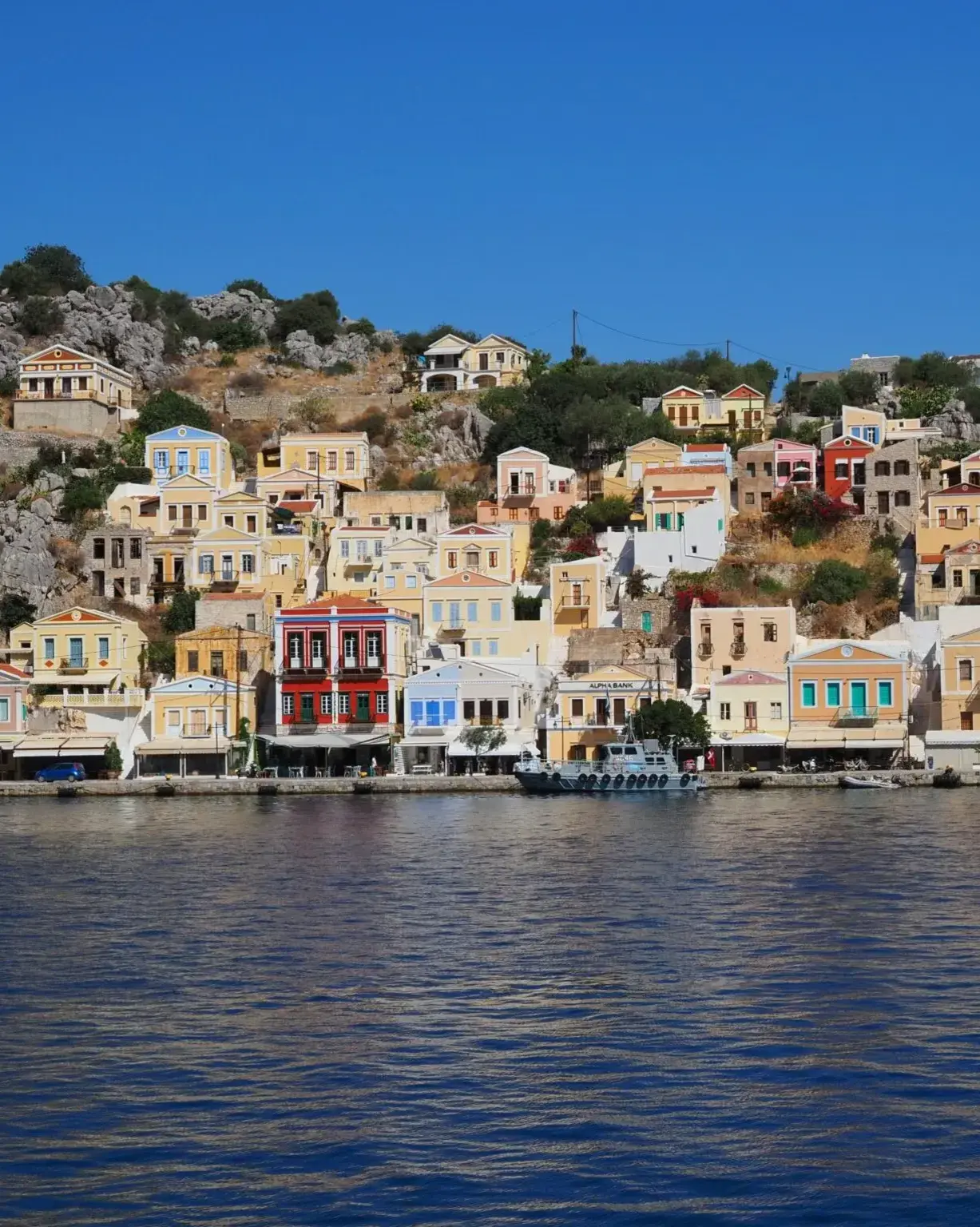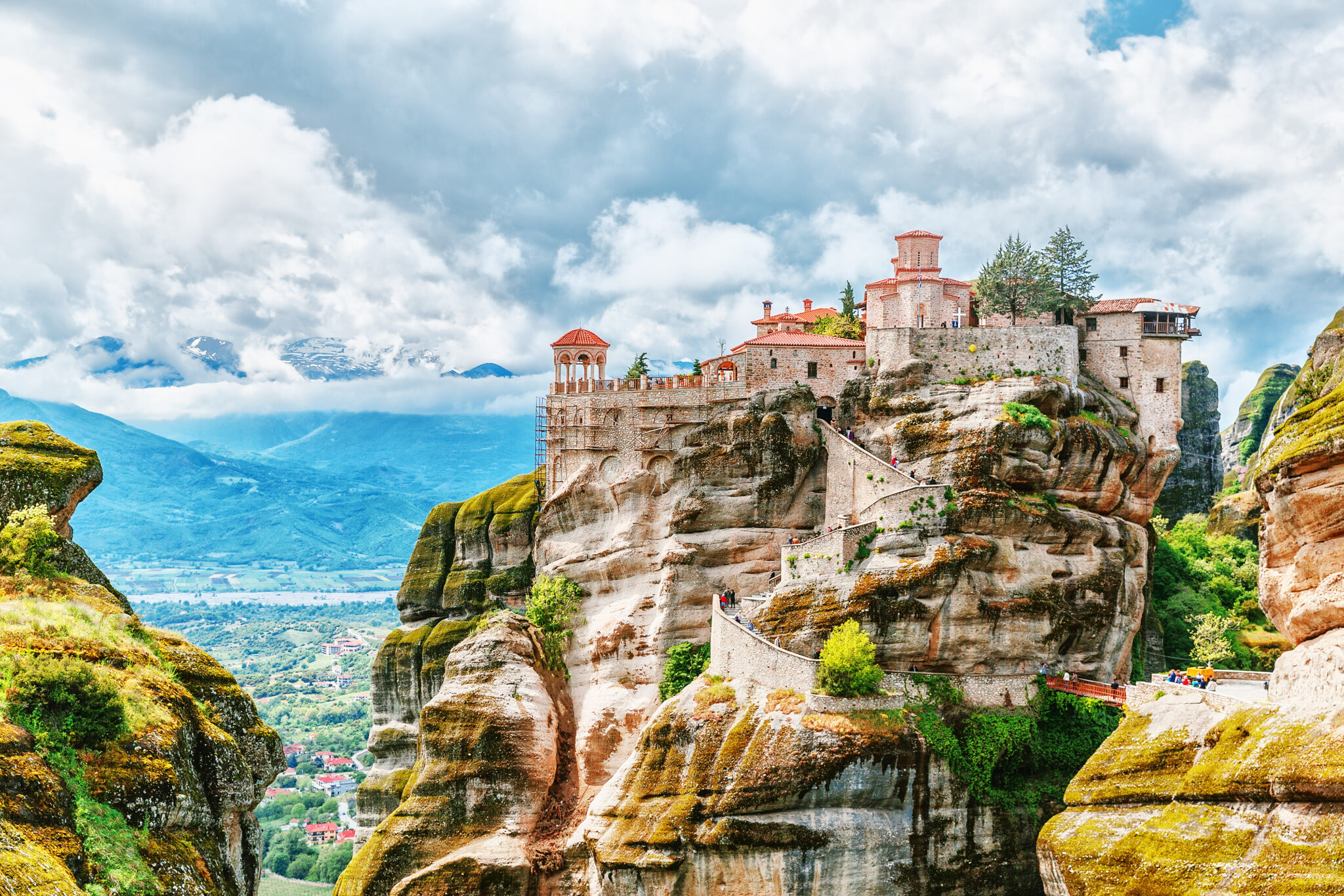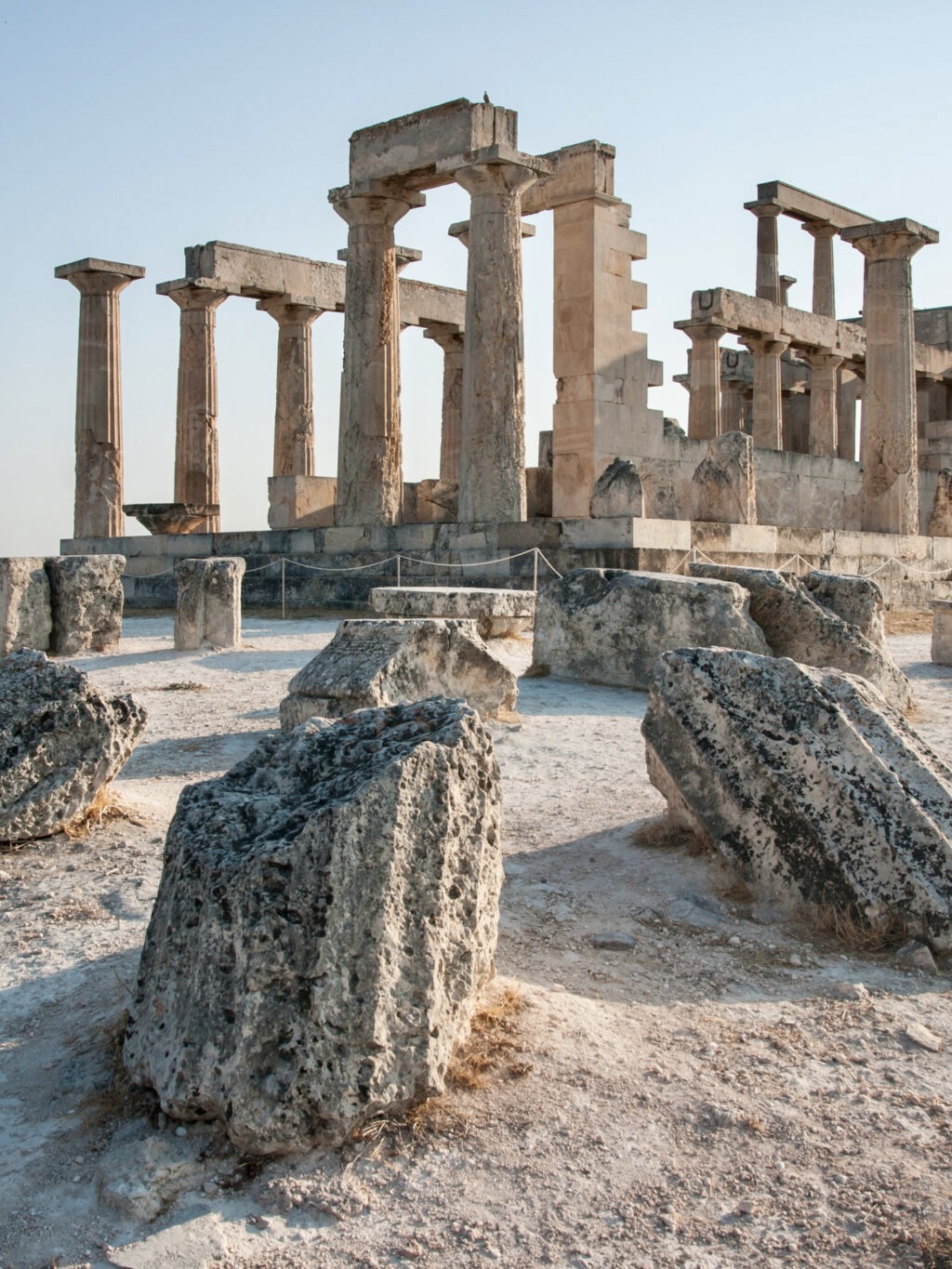What do red eggs, elaborately decorated candles, braided bread and lamb intestines have in common? They are all major features of Greek Easter! Taking place at different times every year, but usually around April, this completely unique celebration is filled with age-old traditions. While many may associate Easter with chocolate bunnies and egg hunts, Greece offers a culturally rich Easter experience like no other. Think mystical church services and candlelit processions through the streets, lamb roasted on the spit and egg-cracking competitions, sun-drenched dancing to traditional tunes in blooming springtime nature and a real feeling of togetherness.
In this guide, we will unravel Greek Easter traditions, providing you with insider knowledge and essential tips to fully embrace this extraordinary celebration. Join us as we explore the sacred processions, the symbolic rituals, and the mouthwatering feasts that define this traditional time. And as a special bonus, we will reveal four unmissable destinations in Greece where you can experience the true essence of Easter.
During ‘Holy Week’, the week leading up to Easter, daily liturgies relate to the trials of Christ before he was crucified, with Thursday being when the Service of the Holy Passion takes place, and when people prepare for the Resurrection (on Holy Saturday, see below). Eggs are boiled and dyed red, to symbolize the blood of Christ, shed on the cross during His crucifixion, and to be left untouched until after the midnight Resurrection service. It is also a tradition on Holy Thursday to make tsoureki, a brioche-type sweet bread that is usually braided with three pieces of dough, which represent the Holy Trinity, to be eaten from Easter Sunday and on.
Part I: The Easter Highlights
Holy Friday: The Epitaphios
Good Friday in Greece begins not with words but with flowers. From dawn, parishioners set to work on the Epitáphios, a waist‑high wooden bier that will soon stand in for the tomb of Christ. By noon every inch of its carved canopy is quilted in white spring blossoms, then misted with rosewater, laced with beeswax tapers, and swung gently through clouds of incense.
The liturgy itself unfolds after nightfall. Once the final hymn fades, the church doors open and the mood turns ambulatory. Priests, chanters, and anyone who wishes to follow fall in behind the flower‑draped bier: city dwellers loop a single block while villagers wind through olive‑dark lanes. Each participant carries an unadorned brown candle, its flicker mirrored in shop windows and shuttered homes, while low minor‑key chants float across the stones. Part funeral march, part communal exhale, the procession is wholly unlike any other Friday night you know.
Holy Saturday: The Resurrection
On this major night the faithful crowd the churchyard, each holding a candle. Children clutch an elaborately trimmed lambáda, an Easter candle customarily given by a godparent, waiting for the holy flame that passes outward from the altar at midnight when the priest proclaims the Resurrection. Light is the theme: the soft glow of thousands of wicks and the sudden, borderline chaotic burst of fireworks the instant the chant “Christos Anesti” (“Christ is risen”) rings out, both meant to signal divine radiance. Church bells boom, rockets hiss, friends and strangers embrace, one calling “Christos Anesti,” the other answering “Alithos Anesti” (“Truly He is risen”).
After the service families hurry home, shielding the still lit wick, and scorch a small cross above the front doorframe before sitting to supper. For anyone who has fasted since Clean Monday, the start of Lent, this is the first taste of meat in forty days. The table centers on mageiritsa, a creamy lamb offal soup bright with dill and lettuce, flanked by salad, cheese, and bread. First comes a round of tsougrisma, the red egg duel: tip against tip, base against base, the loser’s shell shattering on both ends and surrendering to appetite, the winner moving on to the next challenger. Each crack is prefaced by the same exchange, “Christos Anesti,” “Alithos Anesti.”
Easter Sunday: The Feast
Easter Sunday begins softly with tsoureki, a sweet, brioche‑like braid served at breakfast. By midday courtyards and gardens have filled with family and friends who cluster around a whole lamb turning on the spit, while the animal’s seasoned intestines roast nearby to become kokoretsi. Lamb appears for its symbolism, the innocence of Christ offered for humankind.
The table crowds with red eggs, salads, and local cheeses, wine flows, music winds up, and before long people are a little tipsy, singing and dancing in the spring light, a revel that can last until dusk. In the cities the feast moves indoors, set on dining tables or, in recent years, at restaurants ranging from taverna casual to full gourmet, but the spirit of the day remains the same: eat, toast, and savor the reawakening of everything.
Read much more about traditional Greek Easter foods here.
Part II: Local Traditions in 4 Easter Destinations
01
Athens
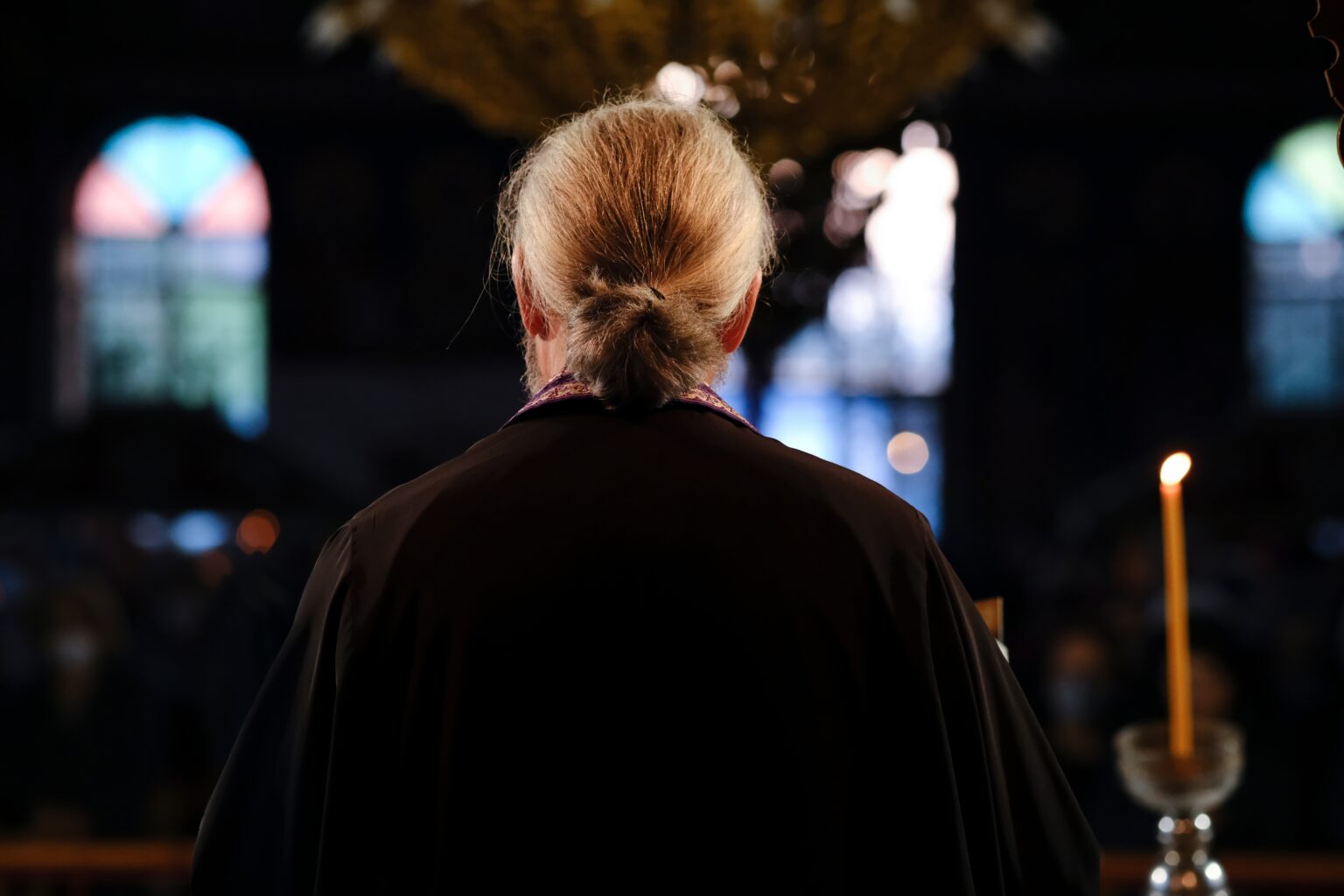

In Athens, the procession of the Epitaphios during Holy Week is among the most powerful spiritual rituals. Many churches across the city host these atmospheric, deeply religious processions. A notable example is the Moni Kaisariani, which sets out at two in the afternoon; arrive early to watch the morning adornment of the bier and see every flower put in place.
For equally memorable experiences, try the church of Agios Dimitrios Loumbardiarios in verdant Thisio, Kapnikarea Church on Ermou Street, the Metochi of Panagia Gorgoepikoos in Plaka, and the church of Agios Nikolaos Rangavas. The last follows a striking route past the 1st Fire Station of Athens, where firefighters salute the bier, and along Irodou Attikou Street, where the Evzones stand at attention. Other beloved churches include Agia Irini on Aiolou Street, known for its stunning interior, and Agios Georgios in Karytsi Square.
For an even greater spiritual high, climb to the chapel of Agios Georgios on Lykavittos Hill on Holy Saturday night and take in the sweeping view of Athens by starlight. Other moving settings include the church of Agia Fotini near the Olympion, the 11th‑century church of Agia Aikaterini in Plaka, and Agia Sofia on Dionysiou Areopagitou Street, directly beneath the Acropolis. The Metropolitan Cathedral of Athens, the church of Agios Dionysios in Kolonaki, and the historic Petraki Monastery, whose katholikon dates to the 10th century, are also excellent choices for witnessing these profound Holy Week traditions.
02
Corfu
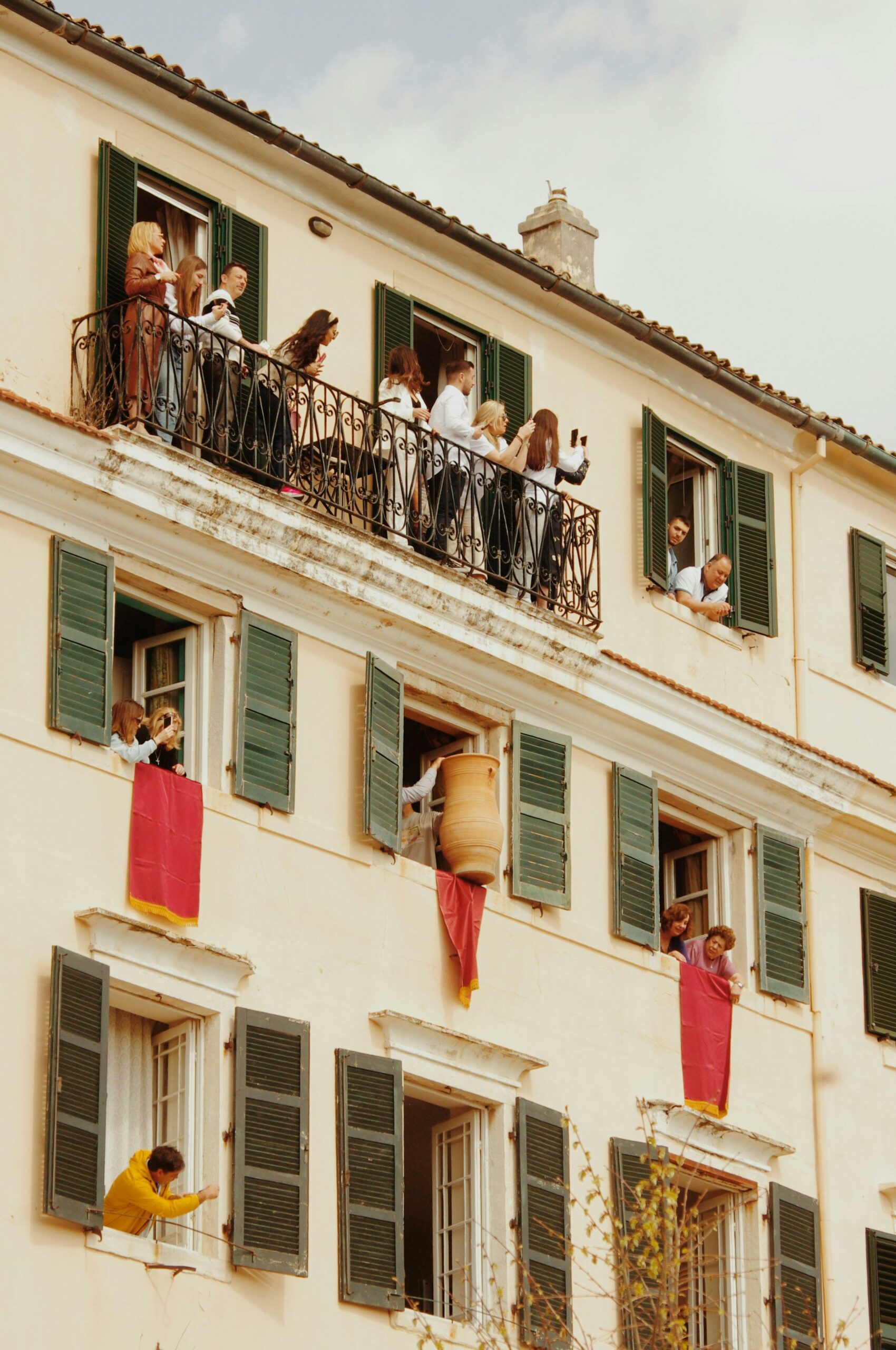
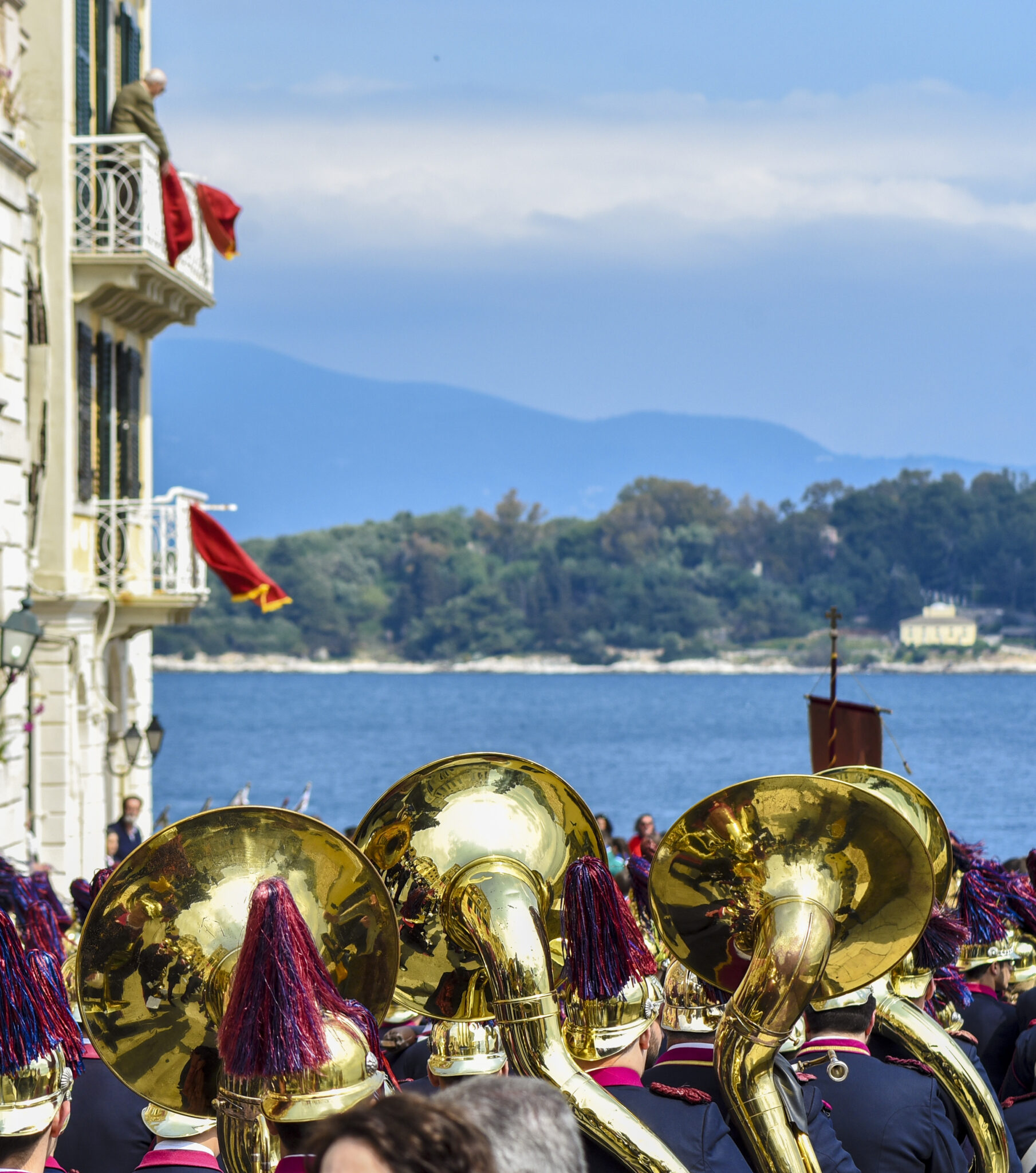
Corfu’s identity is inseparable from music. Eighteen philharmonic bands thread the island with sound, a tradition that began in 1840 and still supplies a near‑continuous score. At Easter, melody takes the lead.
Good Friday sets the city’s churches in motion, each bearing its Epitaphios in a precisely choreographed procession. Bands, choirs and civic groups fall in line while the choristers of the Metropolitan Cathedral and the Municipal Choir chant the Lamentations. The philharmonics answer with Albinoni’s “Adagio,” Abel Moreno Gomez’s “La Madruga,” Verdi’s “Marcia Funebre,” Rodrigo’s “Aranjuez,” Mariani’s elegy “Sventura,” and Chopin’s “Funeral March.” The mood is at once mournful and spellbinding.
Holy Saturday opens with the litany of Saint Spyridon’s Epitaphios, then flows into the Vespers of the Resurrection at the Metropolitan Cathedral. As the Metropolitan sings “Christos Anesti,” every bell in town peals – and balconies explode in the “First Resurrection” custom. Residents pitch red clay pots of water, the botides, onto the street below, an ancient gesture of life’s triumph over death and a sight found nowhere else in Greece.
03
Patmos
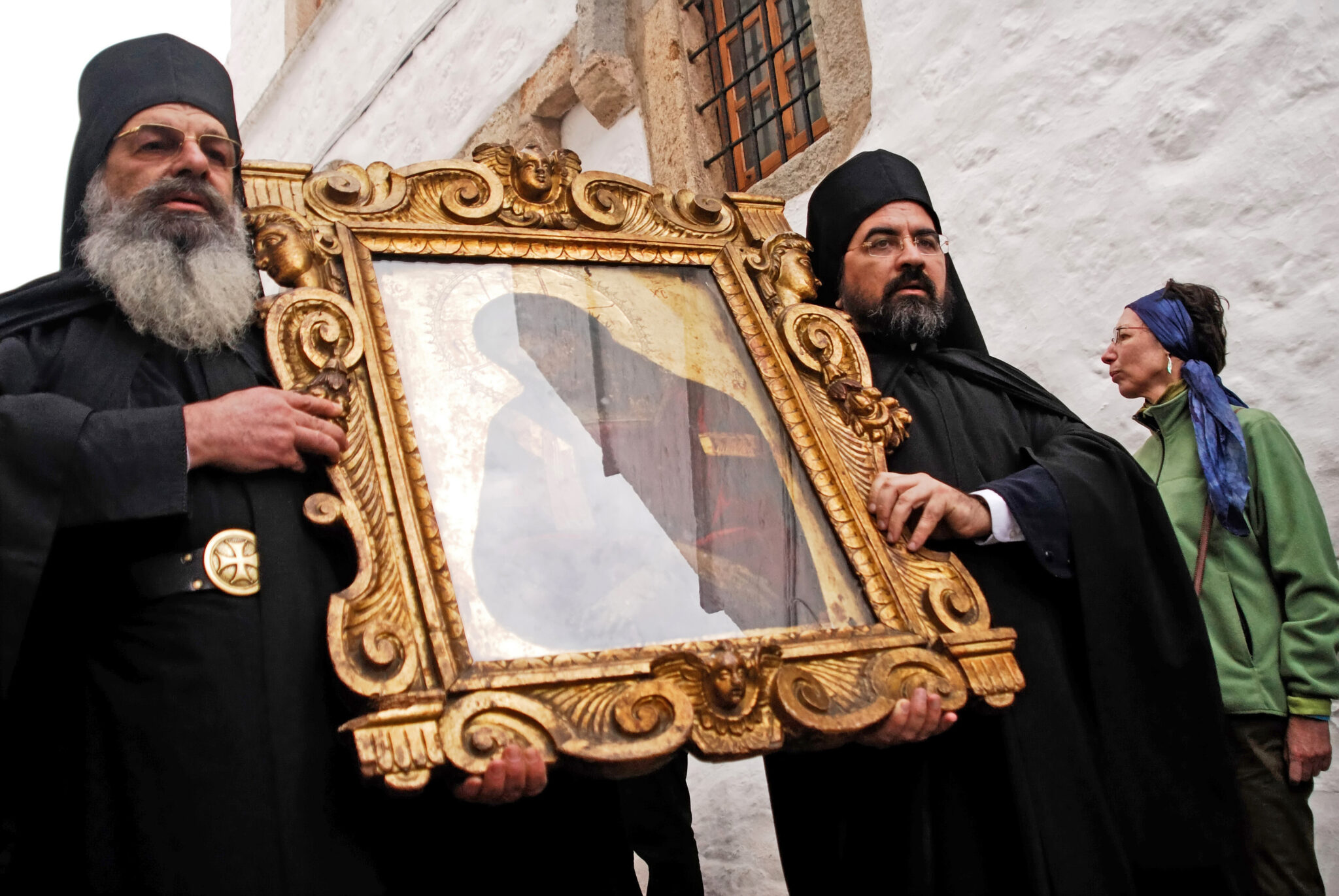
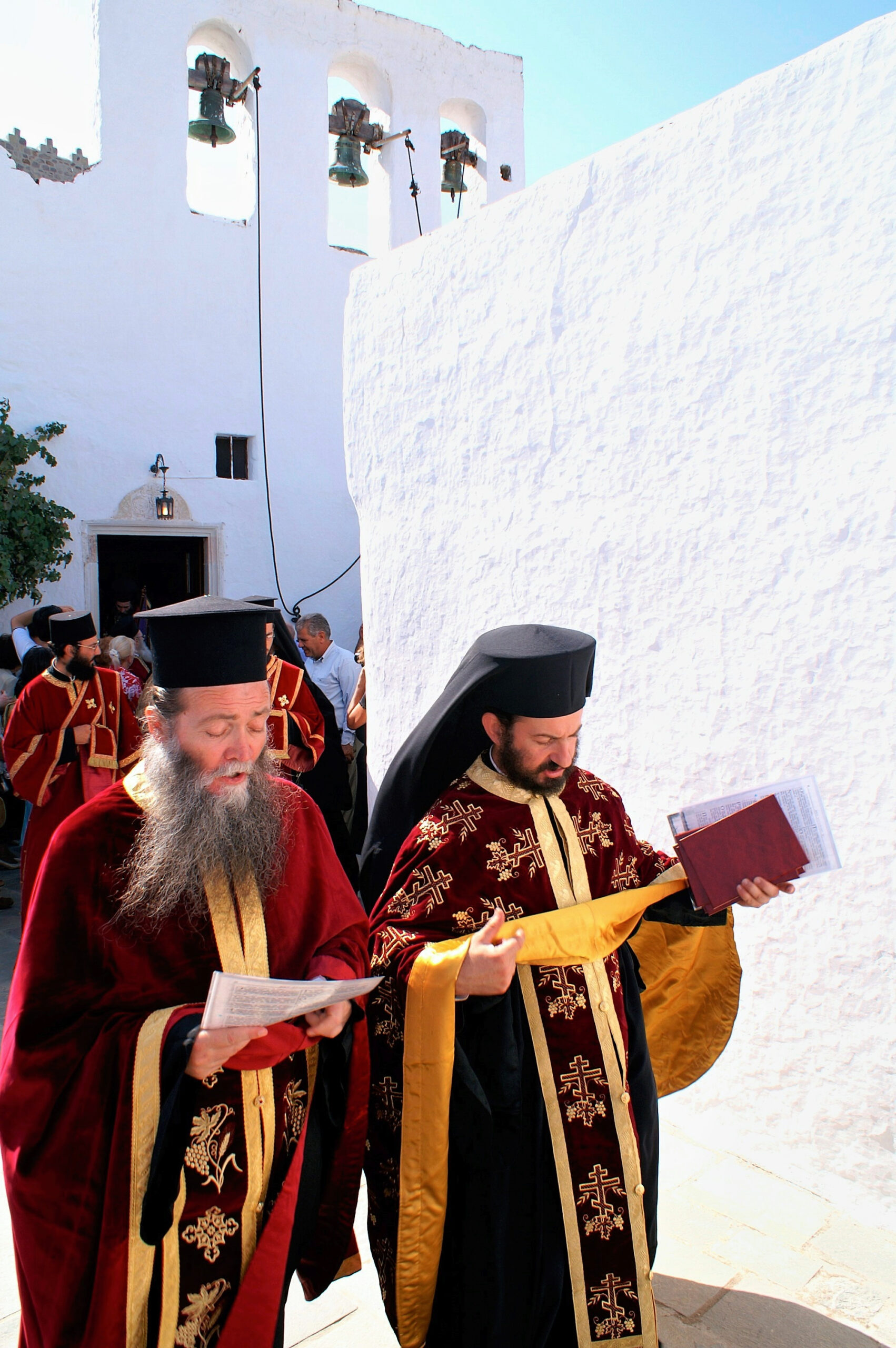
Most visitors grasp it at once: Patmos is different. The Monastery of Saint John the Theologian, perched on a hill above Hora, defines the island’s rhythm and mood. Encircled by high stone walls, the 11th‑century fortress monastery dominates the skyline and, during Easter, every hour of worship. Founded by Saint Christodoulos in honor of Saint John, it remains Patmos’s most potent and beautiful landmark.
Saint John spent years here, converting islanders to Christianity and composing the Book of Revelation. Today the monastery, the Cave of the Apocalypse, and the labyrinthine settlement of Hora together hold UNESCO World Heritage status. Patmos’s measured approach to tourism preserves an atmosphere of quiet devotion, and Easter heightens it. Singular liturgies unfold not only in Hora but across the island; to experience “Easter in Patmos” in full, plan to arrive early and follow the week’s centuries‑old rituals from start to finish.
04
Skiathos
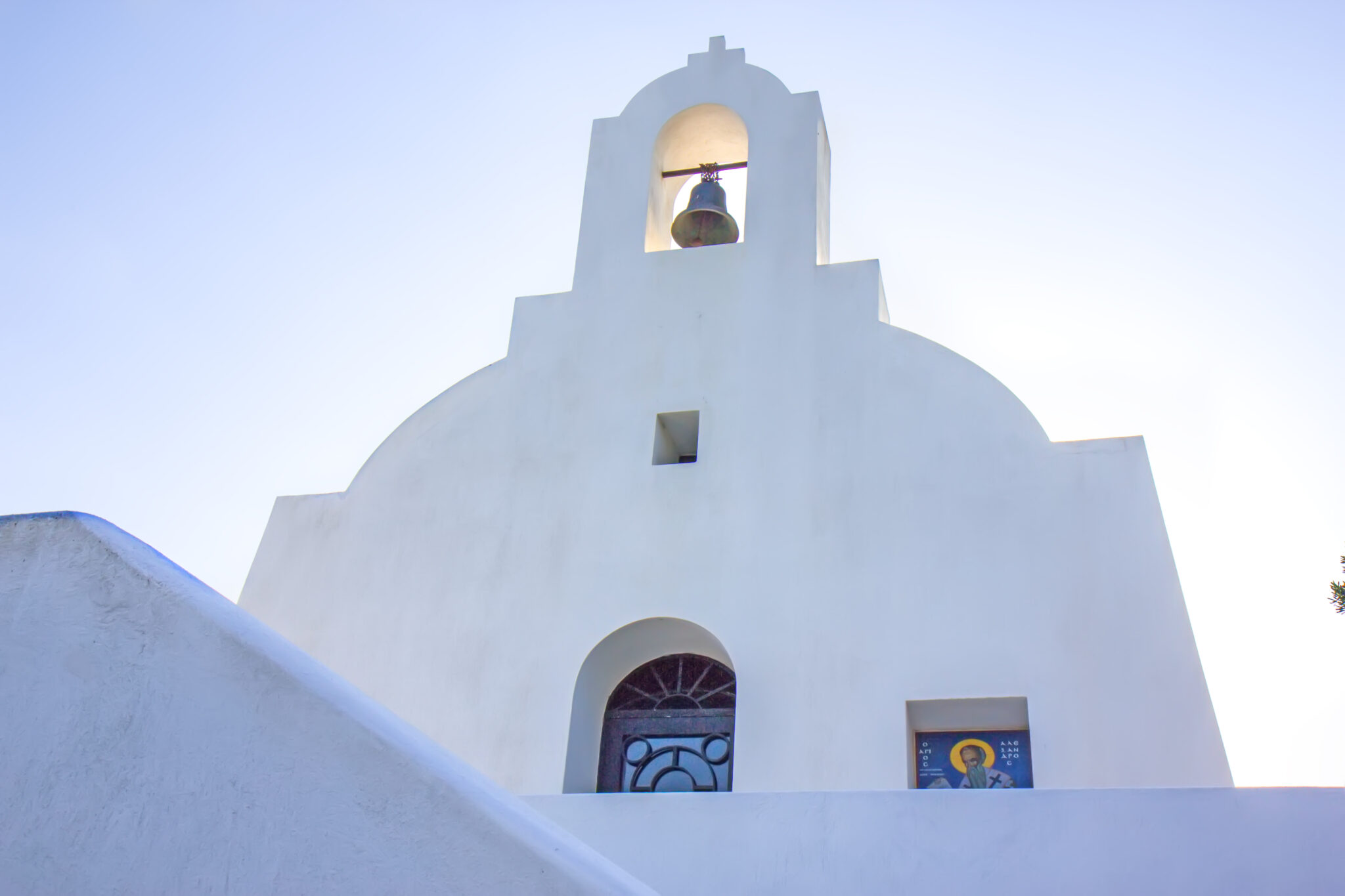
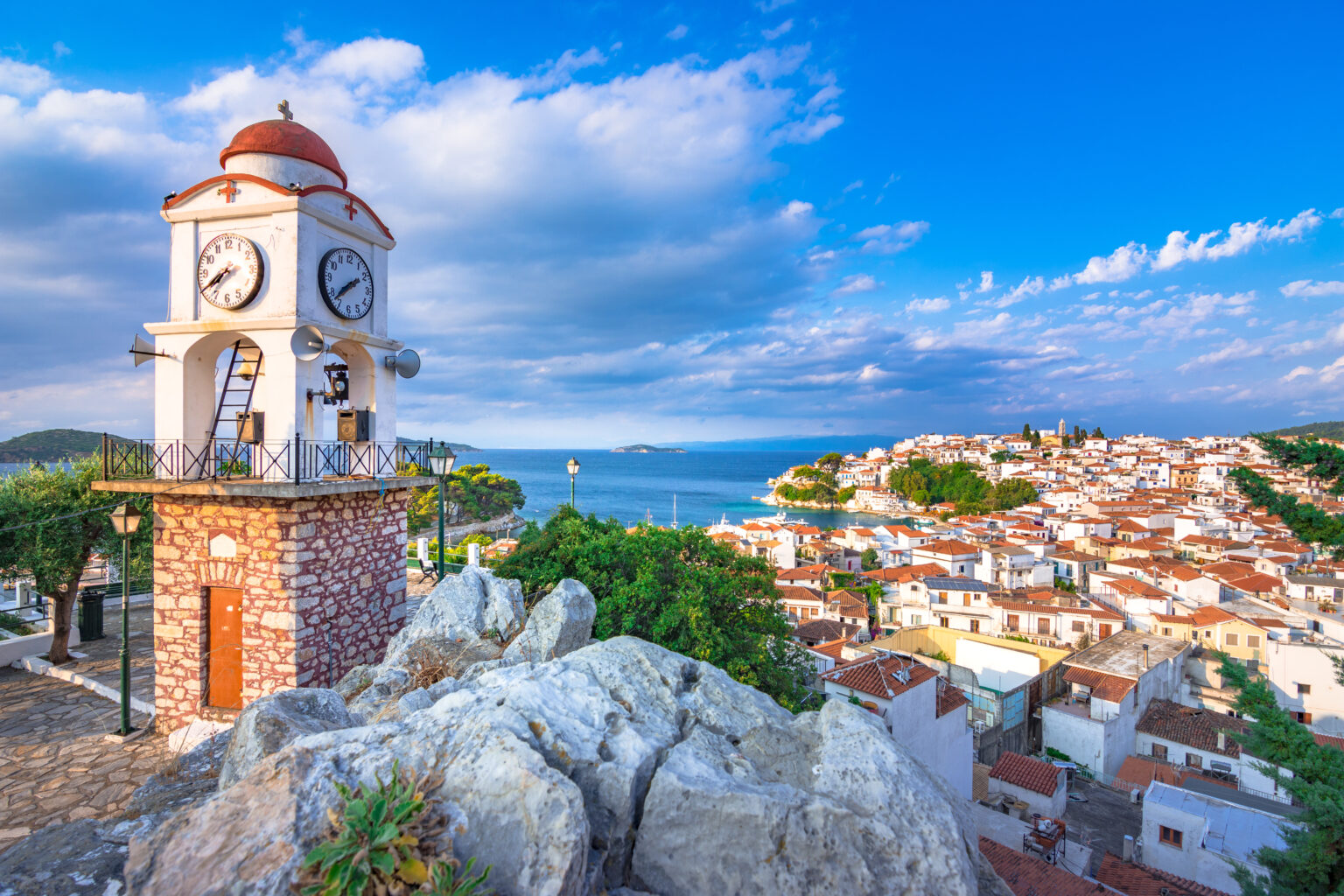
On Skiathos, Good Friday carries deep significance. Islanders keep a strict fast, eating nothing at all that day. The highlight, though, is the Epitaphios procession, unlike any other in Greece. At 1:00 a.m. the flower‑strewn bier sets out into the lamplit lanes of the island’s Hora, winding past whitewashed houses and sea‑view chapels before coming to rest nearly four hours later.
In the early hours of Holy Saturday the faithful slip home to rest, then wake to ready the feast to come. Easter night and Easter Sunday on Skiathos deliver jubilant celebrations and a generosity of hospitality that few other islands can match.



